Fieldwork for the Isle Royale wolf-moose project — the oldest predator-prey study in the world — is led by researchers at Michigan Technological University and supported by volunteers. Last summer’s researchers included two Huskies. Neither student minded being off their phones. Both put their cameras to regular use.
Biomedical engineering major Wesley McGee and Jack Schafer, who majors in ecology and evolutionary biology, spent a month on the island beginning in late May as part of a four-student team. They backpacked roughly 150 miles both on- and off-trail to help research the relationship between moose, wolves and environment. Their duties included measuring density and new growth of balsam fir — a primary winter food source for moose. They focused on more than 30 plots, including random locations and those moose are known to frequent.
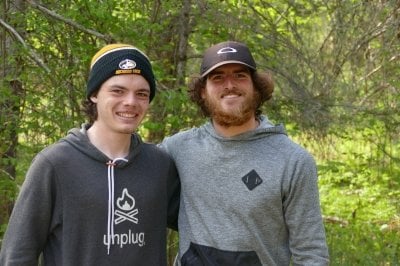
Students also collected moose bones and recorded GPS coordinates for moose carcass locations. They took profile photos of moose for an ongoing study to assess the impact of parasites on moose and kept track of snowshoe hare sightings.
There are no roads on Isle Royale, which is actually a cluster of remote Lake Superior islands. Named a national park in 1940 and designated as an international biosphere reserve in 1980, it can only be accessed by boat or seaplane. Phone and internet service are not readily available. Students had the opportunity to check email when they visited basecamp, but McGee and Schafer chose to remain offline.
“I went with the mindset of, ‘You’re not going to be able to get ahold of me. I’m off the grid,’” said McGee. Schafer said he was happy to seize a rare opportunity to be free of digital distractions and able to focus on the island environment.
"I learned to stop and smell the roses. Slow down. You’re just paying attention to what’s around you. Listening to the sounds and taking them in."
The weather on Isle Royale from late May to June can range from 30 to 86 degrees Fahrenheit. Volunteers, who must have backpacking experience, carry in their own food. They sleep in three-sided shelters or tents in the open — sometimes with moose on the other side of the flimsy wall.
“We got extremely lucky with the weather,” said McGee. “There was a day of rain early on and it rained the day we left.”
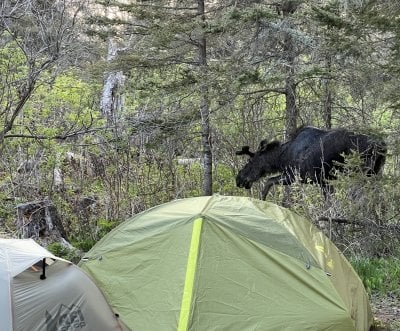
The hardest part? Bugs. Cooler, dry conditions during the first couple of weeks on the island kept the black flies, gnats and mosquitoes at bay. When it warmed up, the swarms materialized, adding new challenges to fieldwork. Luckily, the onslaught occurred at the tail end of the trip.
The best part? “Watching this camel-sized animal swim across a lake,” said McGee, smiling at the memory of a moose sighting on Feldtmann Lake.
For Schafer, the view from Ojibway Tower stays with him. “From there you can see the entire island.”
"Being outdoors for that length of time is not like being in the woods here. We were seeing moose every day, which is crazy."
They became normalized to finding moose bones and antler sheds. Unusual sights included hand-sized American toads, a dead moose calf, and a die-off of six-inch leeches on one of the inland lakes. “We decided we’d rather swim in Lake Superior,” said McGee.
The trip wasn’t entirely without comforts. At basecamp, wolf-moose project co-leader Rolf Peterson and his wife Candy Peterson, a writer and educator who has contributed to the project for more than 50 years, supplemented the students’ backpacker fare with goodies like Candy’s fresh-baked cinnamon bread. She also quizzed them on bird call identification.
Share Your Research Adventure
Cliff-climbing for geological samples? Trapping and releasing beetles to gather clues about invertebrate populations? Devising a new recipe for fungus balls? We’d love to hear about your research adventures, Huskies! Send your stories and photos to social@mtu.edu or DM us on social media. Please include your full name, major and graduation year.
Stories will be edited for brevity and clarity. We’ll share the best of them in Stories from Husky Nation and on Michigan Tech’s social media platforms.
Both McGee, who found the program through looking at summer fieldwork options at national parks, and Schaefer, who found the program through Tech’s College of Forest Resources and Environmental Sciences, said they would do it again — and 100% recommend the experience to anyone who, like them, would rather be outdoors than anywhere else.
“It’s a phenomenal experience for a certain kind of person — for those willing to go without a shower for two weeks,” McGee said, smiling.
“I really wanted to do field research and get outside to learn more about what I’d like to do in the future,” said Schafer. “I’ve always loved the natural world and balance. Ecology is a good major for that. It’s a way to stay outside in what I care about most — the environment.”
In addition to fieldwork opportunities for student researchers, citizen scientists are invited to apply for participation in Moosewatch Expeditions.
McGee said the experience opened him up to considering more possibilities in the biomedical engineering discipline. “I liked the unpredictability of it. Every day was different. I liked that. I know I want to do some sort of field research and maybe not a 9-to-5 career,” he said. “I’ve always loved the outdoors and I can combine the two.”
"I could wake up every morning like this."
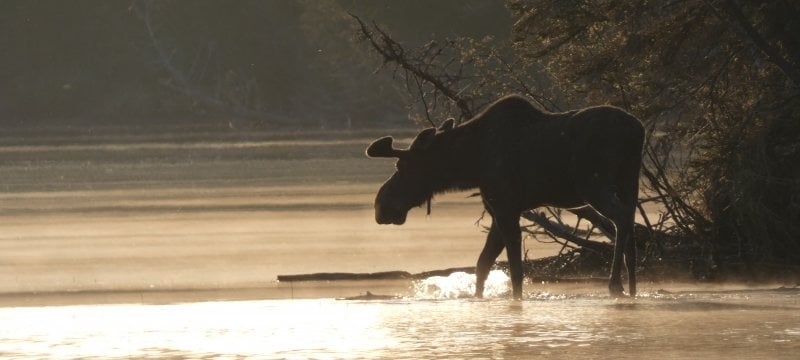
Michigan Technological University is an R1 public research university founded in 1885 in Houghton, and is home to nearly 7,500 students from more than 60 countries around the world. Consistently ranked among the best universities in the country for return on investment, Michigan's flagship technological university offers more than 185 undergraduate and graduate degree programs in science and technology, engineering, computing, forestry, business, health professions, humanities, mathematics, social sciences, and the arts. The rural campus is situated just miles from Lake Superior in Michigan's Upper Peninsula, offering year-round opportunities for outdoor adventure.
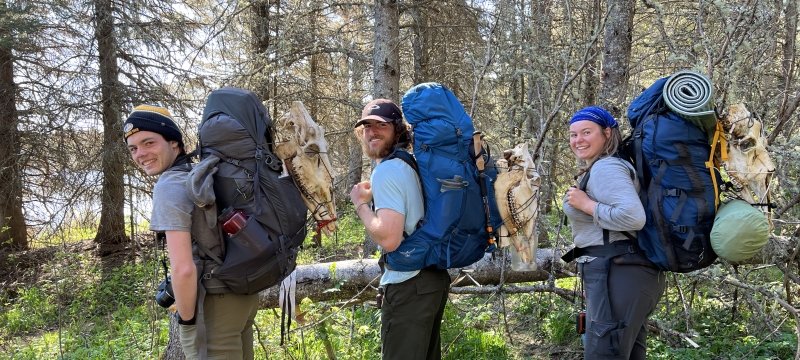
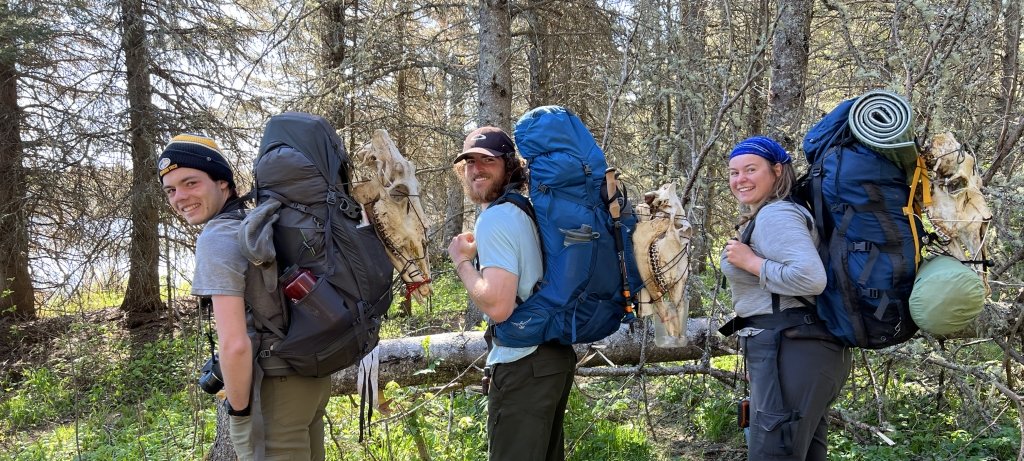
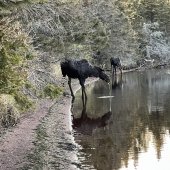
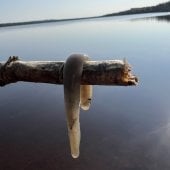


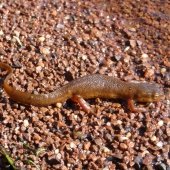

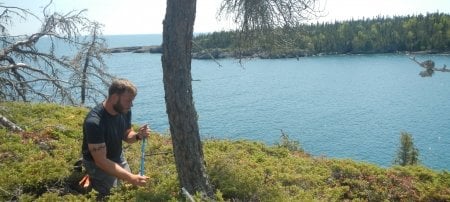
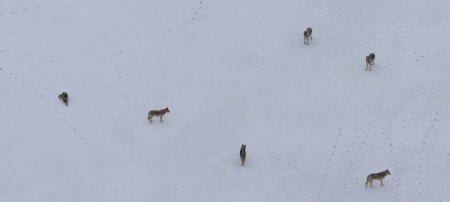

Comments